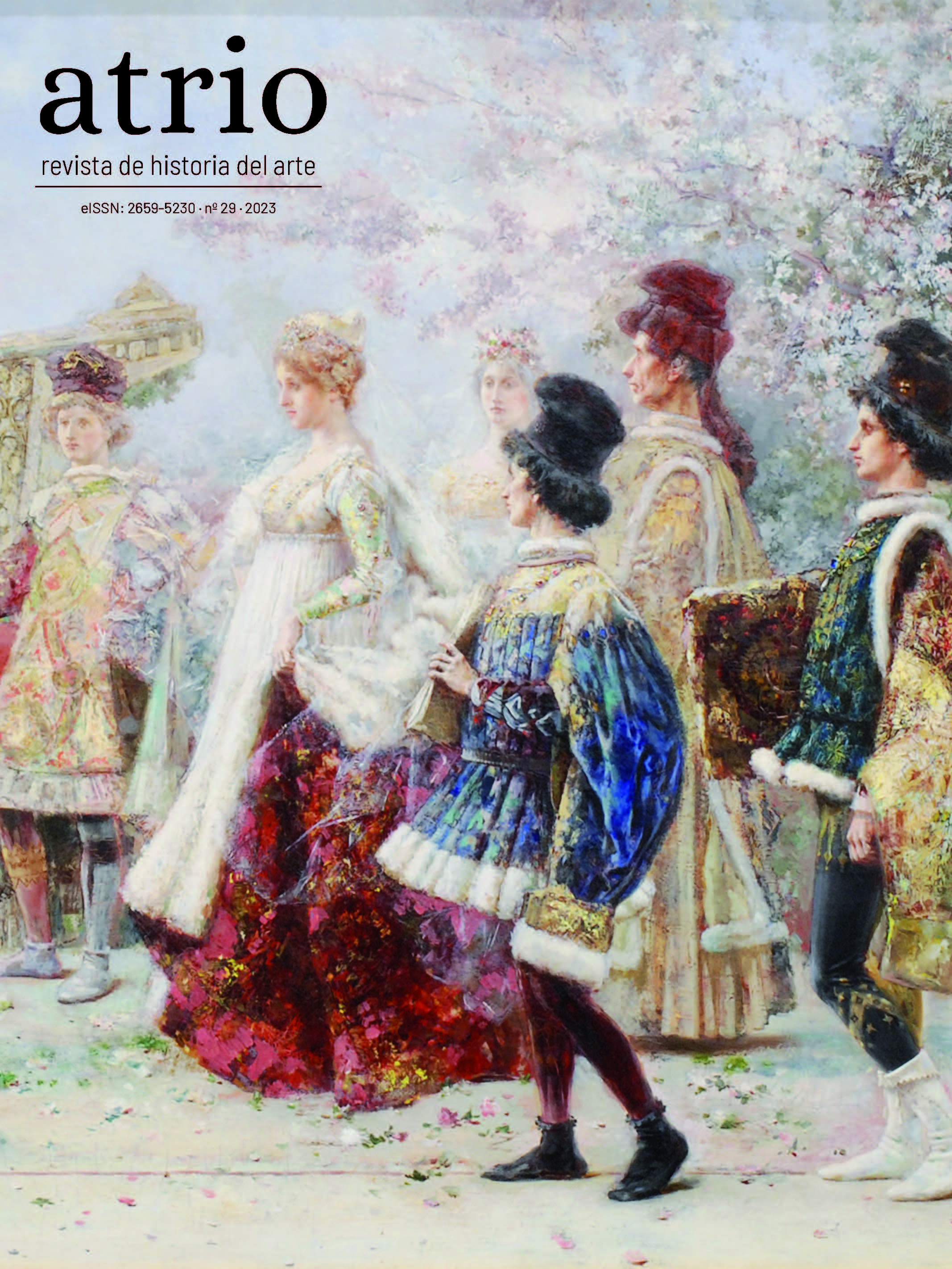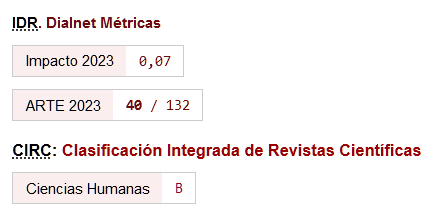Funerary Architecture in Gijon:
Municipal Cemetery of Deva. Analysis of the Urbanistic Plans (1989-1999).
DOI:
https://doi.org/10.46661/atrio.8127Keywords:
Architecture, Urban Spaces, Funerary Art, Cemetery of Deva, 20th Century, Urbanism of GijónAbstract
Into the 20th Century, many of the cemeteries from the middle of the Enlightenment period, are absorbed by urban development. The search, then, for a new location in accordance with current regulations, will be one of the main factors for this new way of cemeteries, built at the end of the 20th Century. This study focuses on the city of Gijón. El Sucu, used during the 20th Century, had been completely absorbed by urban development of the city. The solution was to build The New Cemetery of Gijón (1999), located in Deva. The current ideas about this burial works are far away from the previous constructions. In this study we analyze not only these issues related with architecture and urbanism, but all these research lines and how this development was conditioned because of a social change of mind related with the funeral issues.
Downloads
References
Fuentes documentales:
Archivo Municipal de Gijón (AMG). Gijón. Fondos.
INE. Instituto Nacional de Estadística. Consultado el 8 de mayo de 2023. https://www.ine.es/.
Ley I: Sobre la construcción de cementerios fuera de poblado para el entierro de cadáveres, de 1804. Novísima recopilación de las leyes de España, t. VI, Tít. III, Suplemento, Ibarra, Madrid, 1806.
Fuentes periodísticas:
“Cegisa ampliará el Parque de Cenizas del Cementerio Municipal de Deva.” Revista Funeraria, 9 de marzo de 2021. Consultado el 13 de abril de 2023. https://revistafuneraria.com/cegisa-ampliara-el-parque-de-cenizas-del-cementerio-municipal-de-deva/.
“El Sucu, sin nuevos títulos.” La Nueva España, 13 de mayo de 2007. Consultado el 13 de abril de 2023. https://www.lne.es/gijon/2007/05/13/sucu-nuevos-titulos-21887970.html.
Ceinos, J. M. “Vermú en la plaza elíptica.” La Nueva España, 24 de febrero de 2013. Consultado el 13 de mayo de 2023. https://www.lne.es/gijon/2013/02/24/vermu-plaza-eliptica-20700725.html.
Collado, Aida. “El cementerio de Deva estrenará ‘El parque de las cenizas’ en enero.” El Comercio, 25 de octubre de 2008. Consultado el 13 de abril de 2023. https://www.elcomercio.es/gijon/20081028/gijon/cementerio-deva-estrenara-parque-20081028.html.
Palacios, Luján. “El cementerio de Deva contará con un horno para incinerar restos humanos del osario.” La Nueva España, 15 de mayo de 2012. Consultado el 13 de abril de 2023. https://www.lne.es/gijon/2012/05/15/cementerio-deva-contara-horno-incinerar-20892848.html.
Fuentes bibliográficas:
Bellmunt y Traver, Octavio, y Fermín Canella y Secades. Asturias. Gijón: Silverio Cañada, 1980.
Bermejo Lorenzo, Mª del Carmen. Arte y Arquitectura Funeraria. Los cementerios de Asturias, Cantabria y Vizcaya (1787-1936). Oviedo: Universidad de Oviedo, 1998.
Blanco González, Héctor. “Características del grupo profesional de los maestros de obras en Asturias.” Liño. Revista Anual de Historia del Arte, no. 19 (2013): 53-64.
Blanco González, Héctor. Miguel García de la Cruz, arquitecto (1874–1935). Gijón: Fundación Alvargonzález, 2000.
Fernández García, Felipe. La franja periurbana de Gijón. Gijón: la Industria, 1986.
Fernández Hidalgo, Mª del Carmen, y Mariano García Ruipérez. “Los cementerios. Competencias municipales y producción documental.” Boletín de la ANABAD 44, no. 3 (1994): 55-85.
Granda Álvarez, Francisco. Gijón a escala. La ciudad a través de su cartografía. Gijón: Ayuntamiento de Gijón, 2003.
Jovellanos, Gaspar Melchor de. “Reflexiones sobre la legislación de España en cuanto al uso de las sepulturas que presentó a la Academia de la Historia en 1781.” Boletín de Autores Españoles, no. 46 (1913): 477-479.
Jovellanos, Gaspar Melchor de. “Testamento por comisario del Excmo. Sr. D. Gaspar Melchor de Jove-Llanos, otorgado en el Castilo de Bellver en 2 de julio de 1807.” En Inauguración de la Estatua de Jovellanos. Gijón, 1891.
Moro Barrañeda, José María. Las epidemias de cólera en la Asturias del siglo XIX. Oviedo: Universidad de Oviedo, 2003.
Ortega Varcárcel, Mª Enriqueta. 1394 Nombres. Monumento a la memoria de las víctimas de la represión franquista. Gijón: Ayuntamiento de Gijón, 2010.
Rendueles Llanos, Estanislao. Historia de la villa de Gijón. Gijón: Imprenta de El Norte de Asturias, 1867.
Published
How to Cite
Issue
Section
License
Copyright (c) 2023 Sandra Sánchez García

This work is licensed under a Creative Commons Attribution-NonCommercial-ShareAlike 4.0 International License.
Los autores/as que publican en Atrio. Revista de historia del arte están de acuerdo con los siguientes términos:
- Los autores/as conservan los derechos de autor y garantizan a la revista el derecho de ser la primera publicación del trabajo al igual que licenciado bajo una licencia de Creative Commons Attribution-NonCommercial-ShareAlike 4.0 International License que permite a otros compartir el trabajo con un reconocimiento de la autoría de este y la publicación inicial en esta revista.
- El autor/a o cedente del material que se entrega para su publicación autoriza a la revista para que publique, sin obligación alguna (económica o de otra naturaleza), el contenido del referido manual tanto en formato papel, como en digital, así como en cualquier otro medio. Esta cesión de uso del material entregado comprende todos los derechos necesarios para la publicación del material en la revista. Quedan garantizados, simultáneamente, los derechos morales del autor
- El autor/a o cedente es plenamente consciente y está de acuerdo con que todos o cualesquiera de los contenidos proporcionados, formarán una obra cuyo uso se cede a la revista para su publicación total o parcial.
- El autor/a o cedente garantiza ser el titular de los derechos de Propiedad Intelectual sobre los contenidos proporcionados, es decir, sobre el propio texto e imágenes/fotografías/obras fotográficas que se incorporan en su artículo.
- El autor/a o cedente asegura y garantiza: (i) que todo el material enviado a la revista cumple con las disposiciones legales aplicables; (ii) que la utilización de cualquier material protegido por derechos de autor y derechos personales en la concepción del material se encuentra regularizada; (iii) que obtuvo las licencias de derechos, permisos y autorizaciones necesarias para la ejecución del material, inclusive los derechos de imagen, si fueran aplicables; y (iv) que el material no viola derechos de terceros, incluyendo, sin limitarse a estos, los derechos de autor y derechos de las personas.
- El autor/a o cedente, exime a la revista de toda y cualquier responsabilidad con relación a la violación de derechos de autor, comprometiéndose a emplear todos sus esfuerzos para auxiliar a la revista en la defensa de cualquier acusación, medidas extrajudiciales y/o judiciales. Asimismo, asume el abono a la revista de cualquier cantidad o indemnización que esta tenga que abonar a terceros por el incumplimiento de estas obligaciones, ya sea por decisión judicial, arbitral y/o administrativa.













